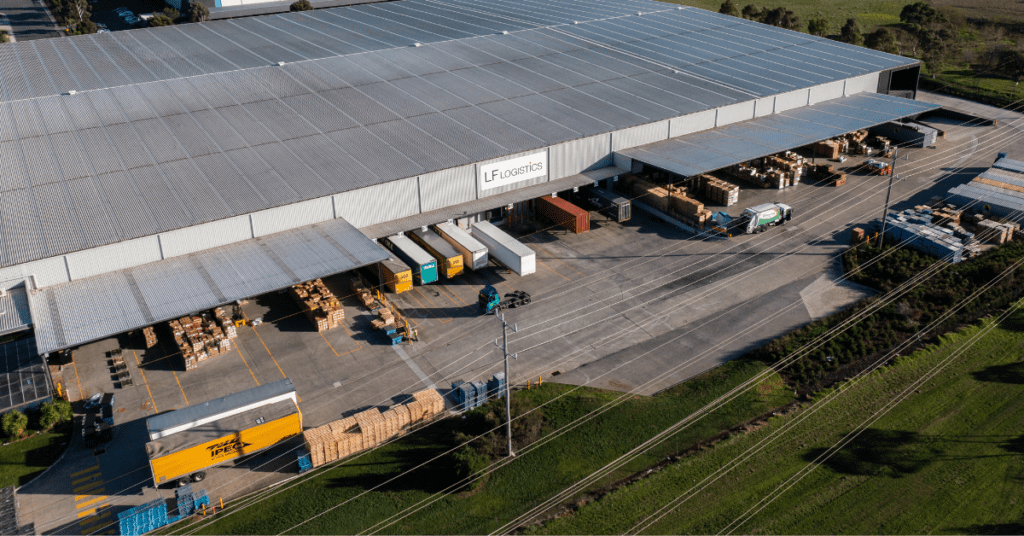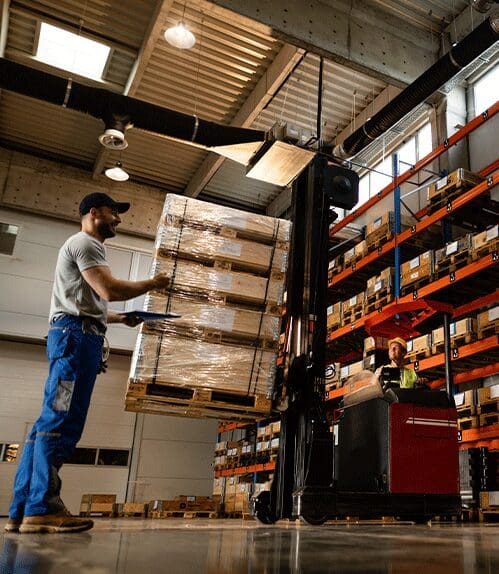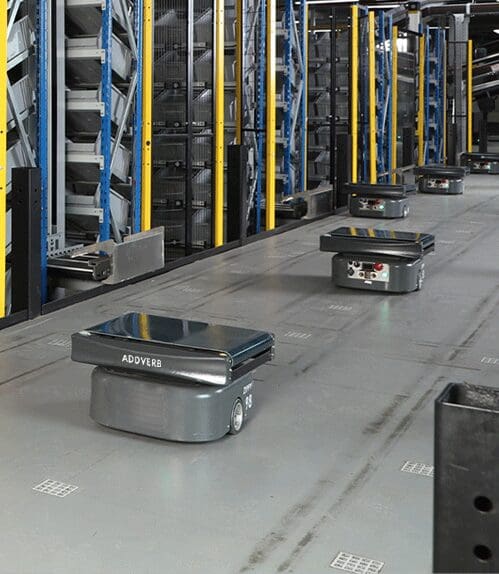Table of Contents
Navigating the world of warehouse shipping can be akin to solving a puzzle: it all comes down to getting the correct pieces in the right places at the right time.
Whether you’re new to this or want to fine-tune your existing processes, understanding the essential phases and how to improve them can make a big difference.

Let’s look at the fundamentals of efficient warehouse shipping procedures and find ways to streamline your operations. Ready to start? Let’s go!
Steps in Warehouse Shipping Procedures
Order Processing
It is one of the first steps in the warehouse shipping procedures. After receiving your order and checking you have enough stock, you can proceed to order processing. This step needs you to confirm your client’s information, such as their name and address. This must be precise: if even one number or letter is incorrect, your shipment will not arrive at its intended location.
Addverb’s automated order processing solutions can help your warehouse transport and process orders more efficiently. Zippy can help automate the sorting and routing of returned items, making the reverse logistics process more effective, lowering costs, and enhancing customer satisfaction.
Benefits
- Enhanced safety
- Improved flexibility & efficiency
- Reduced labour costs
This method allows you to examine customer information, which speeds up your workflow swiftly.
With Addverb’s cutting-edge automation solutions, DHL achieved a staggering 300%+ increase in throughput efficiency and accuracy, pushing over 100 units per hour.
Picking
Product picking is the second stage in the warehouse shipping procedure. Addverb’s Goods-to-Person solutions enable efficient and precise pickup and delivery of many SKUs required for order consolidation. This approach saves over 90% of the time and considerably improves accuracy.
Automated fulfilment centres may service both B2B and B2C enterprises, enhance inventory accuracy, and optimise space while processing massive volumes of varied SKU sizes.
Furthermore, Addverb’s Warehouse Control System continuously monitors and allocates work depending on order priority, allowing your firm to optimize labor and efficiency.
- Robotic Picking: Addverb’s AI-powered robotic picking solutions can eliminate the picking burden. Our systems use potent algorithms to recognise and accurately pick objects and specially built grippers that are particular to the product being handled. These flexible robots can execute various activities, including palletising, de-palletising, and order fulfilment.
Packing
Sensors, RFID tags, device-to-device communication, and other forms of connection can all aid in managing daily operations such as packaging. This packaging style includes enough information so the client can quickly identify the contents. There are frequently barcodes that recipients can scan with radio frequency (RF) technology to determine the contents and amount.
Labeling
We incorporate product labeling into the warehouse shipment procedures. Our vision-based intelligent palletization systems modernise your intra-logistics processes. Our extensive offerings cater to bigger payloads, providing faster cycle times, more accuracy, and the flexibility to handle different SKUs and configurations easily.
Shipping
This is the final stage in the warehouse shipment procedures. Shipping is transporting things to their final destinations via truck, ship, or plane. Our ASRS, mobile robots, and intelligent software enable fast pickup/delivery options reducing your inbound to operational time inside a warehouse to shipping.
Read More: Reliance – Automated Distribution Centre
How to Improve Warehouse Shipping Procedures
1. Improve Order Accuracy: As labour becomes scarce and payloads for intralogistics movement grow, Autonomous Mobile Robots (AMRs) become more critical due to their capacity to transfer items with simplicity, safety, and flexibility. To increase customer satisfaction, ensure all orders are chosen and packed appropriately.
Our Automated Guided Vehicles (AGVs) are outfitted with safety sensors, emergency stop buttons, and other safety devices to ensure continuous process efficiency and safe operations.
2. Optimise Picking Routes: Create efficient routes to reduce travel time and expedite order fulfilment.
3. Improve your inventory visibility: Visibility relates to your capacity to locate specific products inside your inventory. It’s essential for inventory checks, allowing you to track down damaged goods before they’re dispatched to your clients. This will enable you to distinguish low-quality items from high-quality ones, improving your warehouse shipping process.
4. Use Shipping Software: Automate and manage shipping activities to improve productivity. Utilise modern shipping software to automate label printing, carrier selection, and rate comparison. This improves productivity, decreases human entry errors, and lowers shipping costs.
5. Implement Real-Time Tracking: Provide live tracking to keep customers informed and increase transparency. This increases customer happiness and openness and enables proactive management of delivery exceptions.
6. Implement Barcode Scanning: Barcode scanning technology can help enhance picking accuracy and speed. This decreases the possibility of errors and guarantees that the correct things are supplied to the appropriate clients.
READ MORE: What Is Reverse Logistics in Supply Chain Management?
Common Challenges in Warehouse Shipping Procedures
1. Order Errors: It is one of the common challenges in warehouse shipping procedures. Errors, inaccurate data entry, and inadequate inventory management are frequently to blame. These mistakes can result in consumer discontent, greater returns, and higher operating costs.
2. Damage During Shipping: Damage during shipping is one of the critical issues faced in warehouse shipping procedures, which can increase costs and affect customer trust. This is generally caused by insufficient packaging materials or inappropriate handling.
3. Managing Returns: Returns management is a big concern for warehouses since it requires additional processing, restocking, and the possible loss of inventory value.
Read More: Enhancing Performance through Advanced Mobile Robotics
Best Practices for Efficient Warehouse Shipping Procedures with Addverb
1. Robotic Sorting Solutions: Zippy can help a warehouse become more efficient by eliminating manual effort, enhancing accuracy, and speeding up order fulfilment. Zippy can follow particular courses and do specific tasks without human assistance. This can shorten the time and effort necessary for material movement, resulting in greater efficiency.
2. Utilise Technology and Automation: A Warehouse Management System (WMS) is a software application that monitors and optimises warehouse operations.
WMS can automate various warehouse management operations, such as inventory management, order tracking, workforce management, real-time visibility, picking and packing optimisation, system integration, and performance analytics.
Addverb’s Optimus is a highly customisable WMS that employs cutting-edge techniques to increase warehouse operational efficiency.
3. Rail Guided Vehicles (RGVs) for Material Handling: Travect, Addverb’s efficient Rail Guided Vehicle, is a faster and more versatile alternative to continuous conveyor systems for transporting pallets within warehouses and factories. It plays a crucial role in managing various challenges for warehouse shipping procedures and optimises material movement.
Read More: Enhance Material Movement with Rail-Guided Vehicles
4. Automated Guided Vehicle (AGVs): Addverb’s Zippy robots can help with last-mile sorting packages without direct human intervention. It helps improve inventory accuracy and keep proper track of the outgoing packages.
Conclusion
Efficient warehouse shipping procedures are critical to preserving customer happiness and optimising operations. Understanding the key phases and adopting adjustments will help you improve accuracy, cut costs, and ensure smooth, timely deliveries. Remember, a well-organised warehouse is the foundation of any effective supply chain.

FAQ
How can I streamline warehouse shipping?
Optimize inventory, automate sorting, use real-time tracking, enhance packaging, and train staff.
Why is inventory management important?
It ensures product availability, reducing delays and improving fulfilment speed.
How does real-time tracking help?
It provides order visibility, enabling quick adjustments and accurate delivery estimates.
How can packaging be improved?
Standardize packaging, automate packing, and ensure material availability to reduce time.
How does staff training impact shipping?
Trained staff are more efficient, making fewer errors and handling issues better.
How can a WMS improve shipping?
A WMS coordinates order processing, picking, and packing, leading to faster shipping.
How does warehouse layout affect shipping?
A good layout reduces travel time, and congestion, and ensures quick access to items.
How can customer feedback improve shipping?
It highlights issues, helping you refine processes and enhance the shipping experience.
Founded in 2016, Addverb offers complete robotics solutions for warehouse and industrial automation, with a strong global presence through its subsidiaries worldwide. The company provides a range of in-house automation products, including Autonomous Mobile Robots, ASRS, and sorting technologies. It serves over 350+ clients, including well-known companies such as Coca-Cola, Amazon, and DHL.





